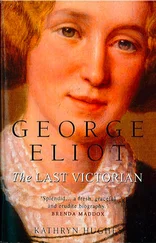In his relief that it had all ended so satisfactorily, the Prince even thought that this proposed friendship between his wife and former mistress might be brought about by finding some charity in which they could share a common interest. But the Princess, quite prepared to be friendly from a distance, was certainly not willing to become as closely involved with Lady Warwick as this. She did, however, undertake to send a brief note of forgiveness. And the Prince was duly thankful. ‘Certainly the Princess has been an angel of goodness through all this,’ he told Lady Warwick, ‘but then she is a Lady and never could do anything that was mean or small.’
Yet, despite the Prince’s protests that he would never feel less than affectionate towards Lady Warwick, her ardent socialism, her indiscreet attempts to make use of her supposed influence over her former lover, as well as her undiminished appetite for other men, imposed too great a strain on a friendship which, if never entirely broken, was never fully resumed. For several years, presents and letters continued to be exchanged on appropriate anniversaries. But one day, four years after the birth of her last child, she was told by a messenger from Windsor, ‘with charming courtesy and frankness’, as she had to admit, that ‘it would be as well for all concerned if [her] close association with great affairs were to cease as it was giving rise to hostile comment’.
By then two other women had entered the Prince’s life, both of whom were universally considered to be far more suitable companions for him than Lady Warwick. One of them was Agnes Keyser, daughter of a rich stockbroker, who, with her sister, ran a nursing home for army officers in Grosvenor Crescent which was supported by donations from the King’s rich friends. A handsome, governess-like woman of strong yet understanding personality, forty-six years old in February 1898 when the Prince first came to know her, Agnes Keyser shunned the kind of society which the Prince had enjoyed at Easton Lodge. And, when he felt disinclined to exert himself in more demanding company, Miss Keyser was prepared always to welcome him to a quiet dinner where, as though in a nursery far more agreeable than any he had known as a child, he was given such plain fare as Irish stew and rice pudding.
The other woman, whom the Prince first met in that same month of February 1898, was to love him and be loved by him for the rest of his life. This was the bright and vivacious, stately and Junoesque Hon. Mrs George Keppel, ‘a memorable figure in the fashionable world’, in the opinion of Osbert Sitwell, who greatly enjoyed listening to her talking when ‘she would remove from her mouth for a moment the cigarette which she would be smoking through a long holder and turn upon the person to whom she was speaking her large, humorous, kindly, peculiarly discerning eyes.’ The daughter of Admiral Sir William Edmonstone, she was then twenty-nine years old and had married George Keppel, a son of the seventh Earl of Albemarle, some years before. Keppel was an extremely handsome, tall army officer with a bristling moustache, an aquiline nose and a hearty laugh. Very fond of women himself, he raised no objection to the Prince’s friendship with his wife, to whom he was deeply attached; and when his income proved inadequate for the sort of life he was called upon to lead — and his wife’s bank managers to whom she was, as her daughter said, ‘irresistibly attractive’, could help no more — he cheerfully went to work for Sir Thomas Lipton, who obligingly found him employment at the Prince’s instigation. Almost everyone, in fact, was devoted to Mrs Keppel, of whom scarcely anything worse was said than that during animated conversations her voice, usually so delightfully deep and throaty, became unnecessarily loud, and that, as Lord Carrington observed, she seemed to enjoy being ‘much toadied by everyone’. Well aware of the importance of her position, she never took advantage of it. Both kind and amusing, she was as discreet as she was disarming. Ministers, trusting in her circumspection and knowing her to be completely loyal to the Prince, while aware of his failings, reposed in her a unique trust, making use of her as a kind of invaluable liaison officer. Rules of precedence were disregarded in her favour: Count Mensdorff, the Austrian Ambassador in London, and a second cousin of the Prince of Wales, noticed that at a dinner party at Crichel Down, ‘the Favorita’, as Mensdorff called her, was actually seated next to the Kaiser so that ‘she might have the opportunity of talking to him’. Mensdorff would have loved to have known ‘what sort of report she sent back to Sandringham’.
With very few exceptions, such as the Marquess of Salisbury and the Dukes of Portland and Norfolk, members of society accepted her and, when it became known that the Princess of Wales accepted her too, invited the Keppels and the Waleses to the same parties. But although the Princess of Wales tolerated her, she naturally found it impossible fully to share the general admiration. She was grateful to Mrs Keppel, no doubt, for keeping her husband entertained and, therefore, good-tempered; but her family knew that she found her constant presence irksome, while her attendants were sometimes given the impression that she even found it absurd. One day after she had become Queen, glancing out of a window at Sandringham, she caught sight of Mrs Keppel returning from a drive with the King in an open carriage. Mrs Keppel had become rather stout by then and the sight of her imposing bosom in such close proximity to the corpulant figure of the King suddenly struck the Queen as ludicrous. She called to her lady-in-waiting to come to share the view, and burst into peals of laughter.
Yet Mrs Keppel’s reputation was such that the Archbishop of Canterbury was invited to sit down at the same table with her. By then, of course, King Edward’s relationship with Mrs Keppel may have changed as his relationship with Lady Warwick did. Certainly, the Archbishop told the Earl of Crawford and Balcarres that he
never believed the Keppel affair was anything more than platonic. The King showed this to the Archbishop by always placing him next to her at table: something he would never have done if she had been, as generally supposed, his mistress — it would have been an insult to the Church and utterly unlike him. The subtlety of this approach, the Archbishop said, was very characteristic of the King.
After the death of the King, who made provision for her through Sir Ernest Cassel, Mrs Keppel bought a villa in Tuscany, where Sir Harold Acton remembers her enormous charm and her still fine figure. ‘One of the secrets of her success,’ Sir Harold says, ‘was that she could be amusing without malice; she never repeated a cruel witticism. Above all, she was not snobbish.’ Her husband, ‘well matched as to height’, looked ‘every inch a colonel’. ‘I remember how shocked he was to find my mother reading a book about Oscar Wilde,’ Sir Harold writes. ‘ “A frightful bounder. It made me puke to look at him,” he muttered. … To a certain extent the Colonel shared his wife’s aura. A guide once pointed him out to a group of inquisitive tourists as “l’ultimo amante della regina Victoria”.’
12
‘Inconvenient’ Friends and ‘Ill-bred’ Children
It is the greatest bane in one’s life saying good-bye, especially to one’s children, relations and friends.
‘If you ever become King,’ the Queen had warned the Prince of Wales in 1868, ‘you will find all these friends most inconvenient, and you will have to break with them all.’ He had long since become used to such criticisms and had grown tired of rebutting the allegation that almost all his friends were the ‘fashionable bad set and betting people’. It could not be denied, though, that a good many of them were. There was, for instance, a certain handsome young man who called himself Count Miecislas Jaraczewski, whose scarcely pronounceable surname was translated into English by his cronies at the Turf Club as ‘Sherry and Whiskers’. Jaraczewski had been admitted to the Marlborough Club by the Prince, who entertained him frequently at Sandringham and was often to be seen with him in Paris where the police described Jaraczewski as the Prince’s ‘faithful and inseparable friend and one who, incidentally, never had a good reputation for honesty as a gambler’. The Queen must have been distressed to learn that this young friend of her son, after giving a splendid supper party one evening at the Turf Club, had returned home to take a lethal dose of prussic acid rather than face arrest and ruin.
Читать дальше










